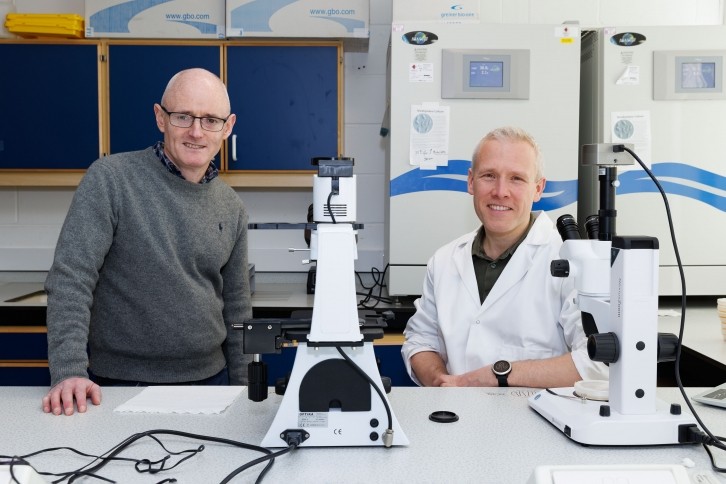All major food production in the UK currently emits greenhouse gases, contributing to the country’s carbon footprint. The UK government wants to establish new food sources which deliver against Net Zero targets and address an overreliance on imports.
Research by experts at the University of Stirling previously found planting fungi alongside trees to create protein-rich mushrooms can sequester up to 12.8 tonnes of carbon per hectare annually.
The crop, which can be consumed fresh or processed into other products, has the potential to produce a nutritious food source for nearly 19 million people a year, globally.
Now, the University of Stirling and truffle producer Mycorrhizal Systems Ltd has begun a two-year trial on the island of Bute, which will see researchers cover the root system of new trees with fungi that produce edible mushrooms.
The £800,000 government-funded initiative will see a team led by Honorary Professor Paul Thomas then assess the environmental benefits and wider economic impact.
“This is a game-changing idea which, if done at scale, will increase domestic food production, incentivise tree planting and help mitigate the impact of climate change,” said Professor Thomas, founder of Mycorrhizal Systems, which is also ploughing £135,000 into the project and running the lab.
“By tackling land-use conflict and creating a calorific output from land that would otherwise not produce food, and at scale, the project outcomes will positively contribute to such priorities and create a net increase in UK food production of up to 1,000 tonnes for each 1,000 hectares of afforestation incorporated into the project.”
Professor Alistair Jump, Dean of the Faculty of Natural Sciences, who co-authored the research and will partner on the initiative, added: “This project will place the UK at the forefront of EMF (ectomycorrhizal fungi) technology. Research suggests a carbon sequestration rate of up to 406kg for every kg of protein produced whilst also aiding biodiversity and conservational goals. This sequestration is in stark contrast to every other major food production system which results in an emission during production.”
If the trial is successful a subsequent rollout could create hundreds of jobs in the UK and thousands worldwide. Jump said: “Much of the work will be distributed in rural areas, supporting a positive socio-economic impact through job creation and infrastructure development.
“The innovation will also have a direct annual contribution to the UK economy and further economic benefits arise through the distribution chain.”
Funding for the two-year project is provided by BBSRC (Biotechnology and Biological Sciences Research Council), part of UKRI (UK Research and Innovation), the largest UK public funder of non-medical bioscience.
The study which laid the foundations for the project was published in PNAS (The Proceedings of the National Academy of Sciences), the prestigious journal of The National Academy of Sciences (NAS), in March.

The emerging field of mycoforestry
This research claimed that growing edible mushrooms alongside trees can produce a valuable food source for millions of people while capturing carbon, mitigating the impact of climate change.
The approach not only reduces the need for deforestation to make way for crops, but it also incentivises tree planting.
Analysis by Professor Thomas found that the cultivation of edible EMF in forests may sequester up to 12.8 tonnes of carbon per hectare annually and produce a nutritious food source for nearly 19 million people per year.
Thomas said: “We looked at the emerging field of mycoforestry, where fungi that grow in symbiosis with living trees are used to create a food crop from new tree plantings, and we found that production of fungi using this system can lead to a very significant sequestration of greenhouse gas.
“This is a huge benefit which means that by producing this food we can actively help mitigate climate change. When we compared this to other major food groups, this is the only one that would result in such benefits – all other major food categories lead to a greenhouse gas emission during production.
“We calculate that if this system was combined with current forest activities, the food production levels could be huge. If it had been used in forestry that has taken place during the last ten years, we could have produced enough food to feed 18.9 million people annually.
“For China alone, their forestry activity for the last ten years could have put in place a food production system capable of enough calorific output to feed 4.6 million people annually.”
He warned there is currently a significant global issue of land-use conflict between forestry and food production and, as a result, net loss of forest area remains high at some 4.7 million hectares per year, according to data for 2010 to 2020. Demand for agricultural land is the biggest driver of global deforestation and this is forecast to accelerate.
Thomas said the technology is emerging and much more needs to be done to realise these benefits. He has called on researchers to join the field and for support from relevant agencies.
He added: “This food production system is highly scalable, realistic and a potentially powerful route to sequester greenhouse gas. It would help with biodiversity and conservation globally, triggering rural socio-economic development and providing an incentive for increased tree planting rates with all the associated benefits that brings.”















